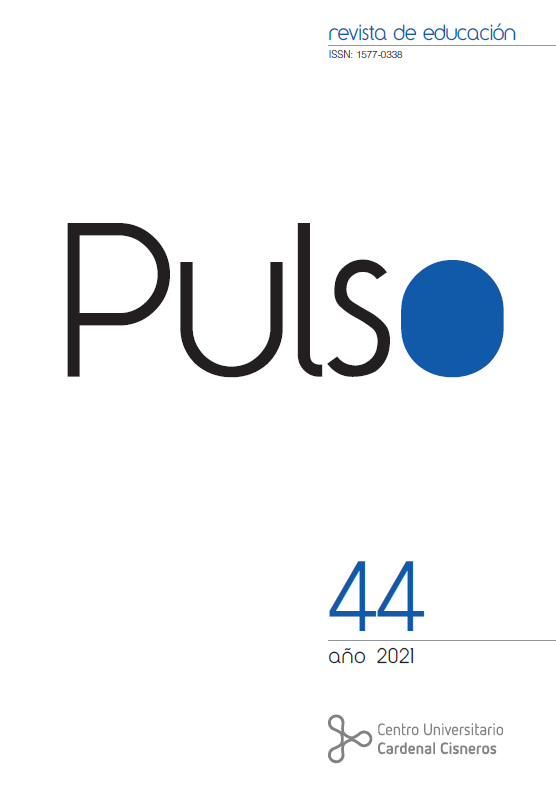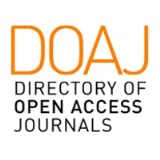Orthoepic competence and its link to phonological and orthographic competences in foreign language teaching
DOI:
https://doi.org/10.58265/pulso.4651Keywords:
Orthoepic competence, Phonological competence, Orthographic competence, CEFR, Foreign language teachingAbstract
The Common European Framework of Reference for Languages (hereinafter CEFR) and its update, the Complementary Volume with New Descriptors, set out the competencies necessary for the development of the oral and written skills of a foreign language, such as the orthoepic competence, which directly relates both skills and is defined in the CEFR as the correct pronunciation of a language from its written form (Council of Europe, 2002; p. 115). Serious analysis of this competence should not be carried out without taking into account both phonological and orthographic competences and thus establishing a coherent relation between the three of them. Thus, orthoepic competence could be considered as the result of merging both competences into one, which mastery allows
the learner to be able to decode the relations between sounds and graphemes and to read words, sentences and texts in the target language correctly. This article aims to analyse this relation and the role of orthoepic competence in the teaching of foreign languages. Finally, we will analyse the activities proposed in the CEFR and the necessary strategies described in the document for its development.
Downloads
References
Atienza, D., & García-Ramos, D. (2005). Los diccionarios on line en un taller de escritura de ELE. Las competencias discursiva y ortoépica. In Las gramáticas y los diccionarios en la enseñanza del español como segunda lengua, deseo y realidad: Actas del XV Congreso Internacional de ASELE, Sevilla 22-25 de septiembre de 2004 (pp. 937-942). Universidad de Sevilla.
Baddeley, A., Gathercole, S. & Papagno, C. (1998). The phonological loop as a language learning device. Psychological Review, 105, 1, 158-173.
Consejo de Europa, (2017). Common European Framework of Reference for Languages: learning, teaching, assessment companion volume with new descriptors. Estrasburgo: Consejo de Europa. Recuperado de https://rm.coe.int/cefr-companion-volume-with-new-descriptors-2018/1680787989.
Consejo de Europa (2002). Marco común europeo de referencia para las lenguas: aprendizaje, enseñanza, evaluación. Strasburgo: Consejo de Europa, Ministerio de Educación, Cultura y Deporte/Instituto Cervantes.
Dempster, F. N. (1987). Effects of variable encoding and spaced representation on vocabulary learning. Journal of Educational Psychology, 79, pp. 162-170.
Ellis, N. & Beaton, A. (1993). Psycholinguistic Determinants of Foreign Language Vocabulary Learning, en Language Learning, 43, 4, pp. 559-617.
Fernández Martín, P. (2009). La competencia ortoépica en el MCER: crítica a su aplicación en la enseñanza de segundas lenguas. Porta Linguarum: revista internacional de didáctica de las lenguas extranjeras, (11), 85-98.
Fernández Martín, P. (2016). Alfabetizando adultos no hispanohablantes: lengua oral, competencias comunicativas y conciencia grafocentrista. Didasc@ lia: Didáctica y Educación, (3), 95-116.
Garayzábal, E., & Codesido, A. I. (2015). Fundamentos de psicolingüística. Síntesis
Giraldo Giraldo, M. (2020). Tratamiento Didáctico de la Pronunciación en las Actividades de Manuales de ELE para Niños.
Guerrero, A. (2002). ¿Qué es la pronunciación? redELE: Revista Electrónica de Didáctica ELE, ISSN, 1571-4667.
Jaén, F. E., & Flores, B. (2020). Alcance y precisión del concepto de competencia en la comunicación lingüística. Orbis Cognita, 4(1), 1-19.
Krohn, M., & Kindbom, C. (2017). Oral Communication Strategies in English as a Foreign Language. Linköping University | Department of Culture & Communication.
Lebrero, P. & Fernández, D. (2015). Lectoescritura fundamentos y estrategias didácticas. Editorial Síntesis.
Lobato, T. (2012). Cuestiones de ortoépica y pronunciación. El caso de ELE en contextos multilingües. Actas del I Encuentro Internacional de profesores de ELE del Instituto Cervantes de Bruselas. 133-144.
Moreno Cabrera, J. C. (2005). Las lenguas y sus escrituras. Tipología, evolución e ideología. Síntesis.
North, B. (2007). The CEFR illustrative descriptor scales. The Modern Language Journal, 91(4), 656-659.
Olson, G. M., Duffy, S. A., & Mack, R. L. (2018). Thinking-out-loud as a method for studying 11 real-time comprehension processes. New methods in reading comprehension research, 253.
Perfetti, C. A. (2013). Acquisition of Reading Competence. Learning to read: Basic research and its implications, 33.
Rigol, M. B. (2005). La pronunciación en la clase de lenguas extranjeras. Phonica, 1.
Sánchez Reyes, S. R., & Durán Martínez, R. (2004). La comunicación oral en una lengua extranjera tras el marco común europeo de referencia. Habilidades comunicativas en las lenguas extranjeras, Ministerio de Educación, Cultura y Deportes, Subdirección General de Información y Publicaciones, 27-50.
Valle Arroyo, F. (1991). Psicolingüística. Ediciones Morata.
Vasylets, O., Gilabert, R., & Manchon, R. M. (2017). The effects of mode and task complexity on second language production. Language Learning, 67(2), 394-430.
Zhang, J., Li, H., Liu, Y., & Chen, Y. (2020). Orthographic facilitation in oral vocabulary learning: effects of language backgrounds and orthographic type. Reading and Writing, 33(1), 187-206.
Downloads
Published
How to Cite
Issue
Section
License
Copyright (c) 2022 Pulso. Revista de educación

This work is licensed under a Creative Commons Attribution-NonCommercial-NoDerivatives 3.0 Unported License.
This journal offers immediate open access to its content based on the idea that offering readers free access to research favours a global exchange of knowledge.
Papers are published in the electronic version of the journal under a Creative Commons License: Attribution-NonCommercial-No derivatives 4.0 International
Authors are allowed and encouraged to promote the post-print version (reviewed and accepted for publication version) of their work online before publishing them. This favours their earlier circulation and dissemination and thus a possible increase in their citation and reach among the academic community.














